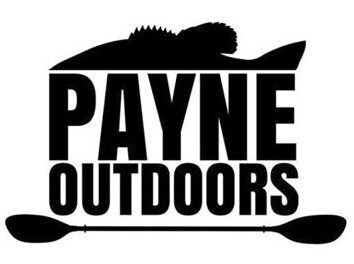Fishing is an extremely detailed sport that requires a lot of gear. It can be quite overwhelming to get your start in the world of fishing, but once you do, it’s hard to stop.
Whether you’re packing your gear up from your first trip ever or storing fishing gear away for the turn of the season, these tips will help keep any beginning angler’s bait and tackle in optimum condition.
Clean off everything.
It may be a pain, but cleaning your fishing gear is the best protection you can give it. You should clean your gear after every use to avoid creating bigger problems in the future. Take all of your reels apart to remove any build up. This makes overall maintenance easier, and keeps your gear ready to use at all times. Before stowing them for a season, replace any worn gears or springs. Apply a layer of grease and oil to lubricate all of the moving parts so that they don’t freeze up or corrode during their time in storage.
 Keep your rods safe.
Keep your rods safe.
Rods are the bread and butter of the fishing world. When it comes to storing fishing gear and especially your rods, regardless of how long they’ll be out of use, sleeves are helpful in keeping the tip and butt sections together. When it comes time to utilize them again, you’ll know exactly which butt goes with which tip. Rods should be kept upright and at room temperature to prevent warping; storing your rods in extreme temperatures can cause the components of the rod to weaken.
Examine your lines.
Second only to the fishing rods themselves, strong fishing line is another element that makes fishing possible. Best practice is to take a look at your monofilament and braided lines for wear and tear before and after each use. Replace any worn lines, then clean with a mild dish detergent to remove buildup. Store monofilament, braided, and fly lines in loose coils. This is especially important for fly lines, as they have memory and will conform to the shape of the storage they are kept in.
Sharpen up.
A decent set of knives make the “dirty work” associated with fishing easier to tackle. Over time, these filet knives can become dull. Using a 65-120 grit stone, sharpen the edges of your blade after every use. If you’re stowing the blade for a long period of time, clean it and apply a light coat of oil for safe keeping.
Invest in a storage system. Any angler, beginner or experienced, should maintain a tidy tackle box. It makes it easy to find the supplies you need when you need them, and can ultimately help you catch more fish!
 Choose a hard-plastic tackle box.
Choose a hard-plastic tackle box.
You’ll need one that will withstand rough waters and keep your gear safe and secure. You can find them in various sizes, depending on how much gear you need to tote. If you’re not looking for anything heavy duty, tackle bags are great. These soft-sided bags have many compartments that hold tackle trays, as well as other compartments and pockets for storing fishing gear, other tools and personal items, like sunglasses.
Get organized.
When you’re using a tackle box or bag, it’s important to store tackle based on the shape and size. As a general rule, tackle used for the same species of fish should be stored together. Keep your lures in separate groups (crank bait lures, minnow bait lures, top water lures, etc.). If you have plastic baits in a variety of colors, store similar colors together. Mixing may cause the bait to bleed, ruining the color. Most importantly, when storing fishing gear, keep your hooks in small utility boxes so they don’t scatter all over your tackle box. There’s nothing worse than being jabbed by a rogue hook!
Get yourself out there this season and hone your fishing craft. These tips for storing fishing gear will make maintaining your gear easy so you’re always ready for an adventure on the water.
This post is brought to you by Mayer Alloys, an alloy company that sells solder fishing materials.
